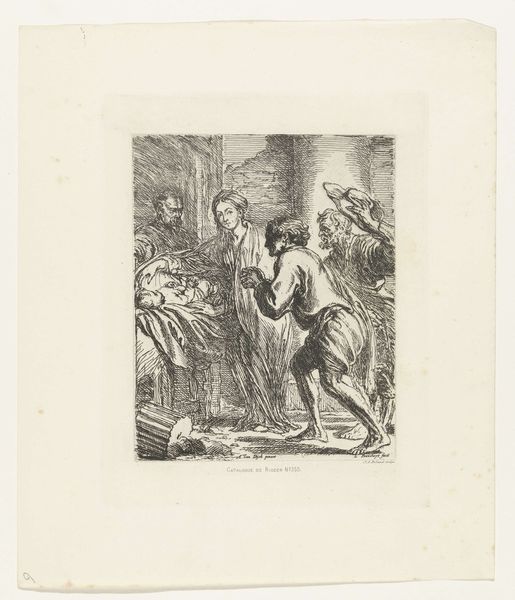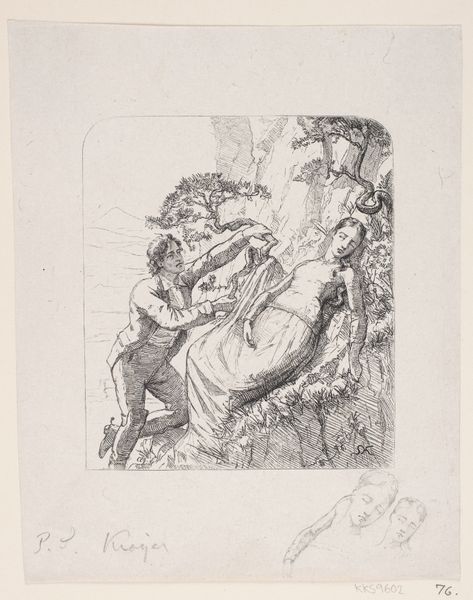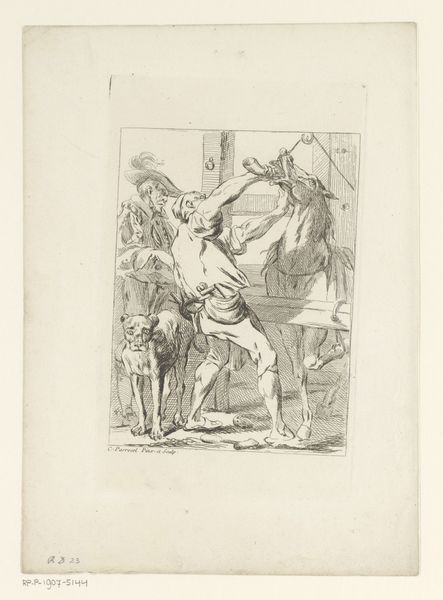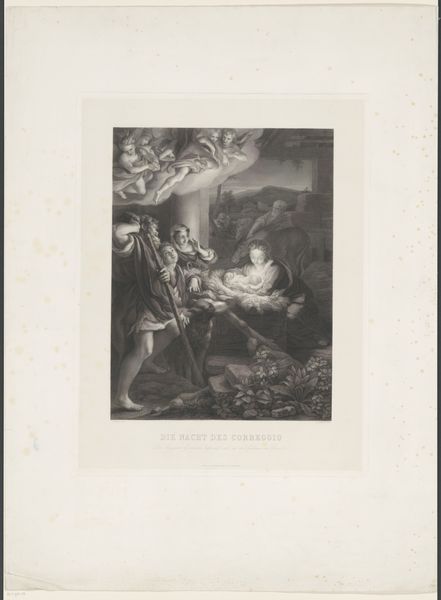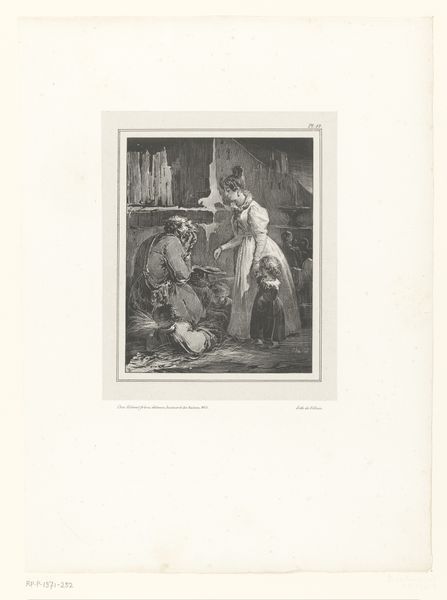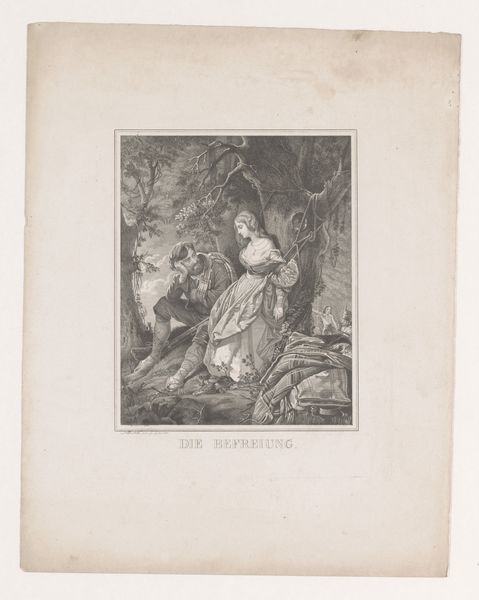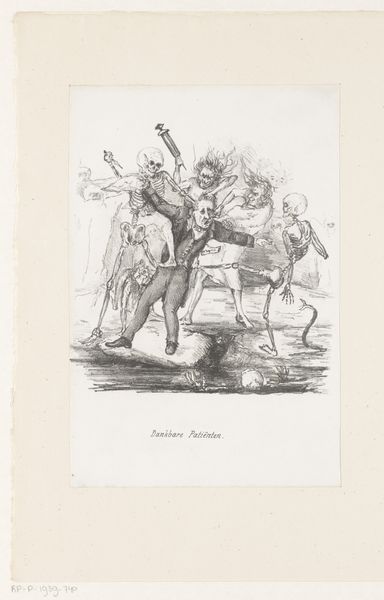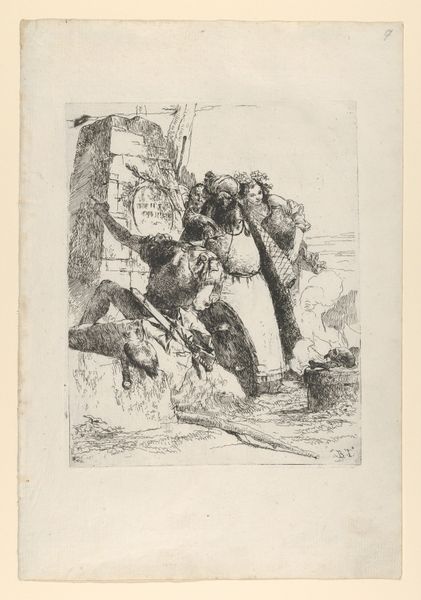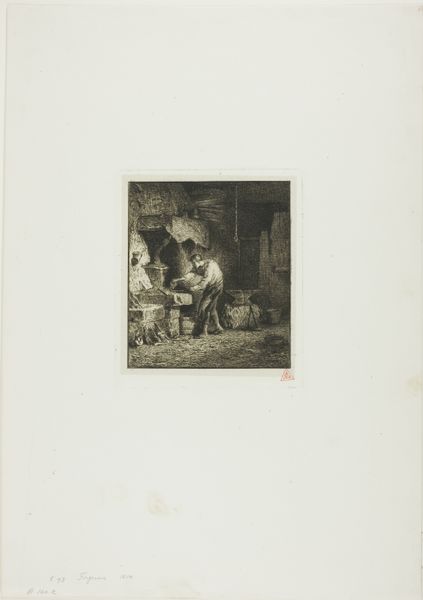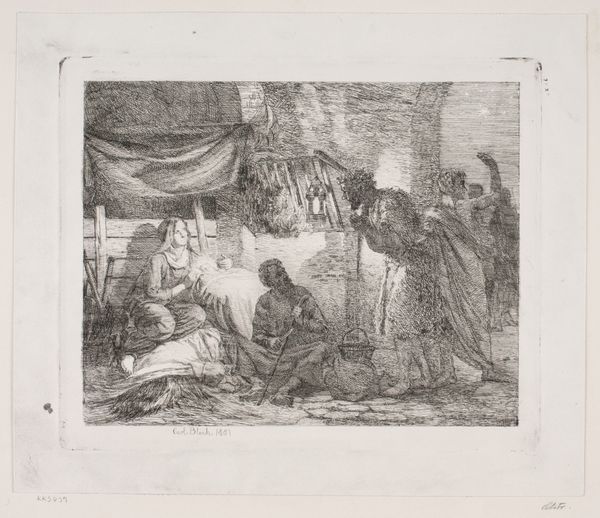
drawing, lithograph, print, paper
#
pencil drawn
#
drawing
#
narrative-art
#
lithograph
# print
#
figuration
#
paper
#
romanticism
#
pen-ink sketch
#
line
#
history-painting
Dimensions: 258 × 210 mm (image); 390 × 316 mm (sheet)
Copyright: Public Domain
Curator: Editor: This is "Mephistopheles Appearing to Faust," a lithograph by Eugène Delacroix from 1828, now at the Art Institute of Chicago. There's a dramatic, almost theatrical mood, heightened by the stark contrast and expressive lines. What do you see in this piece, beyond the immediate narrative? Curator: I see Delacroix engaging with a critical juncture in European thought. Goethe's "Faust" was revolutionary, a direct challenge to established religious and social orders. Consider the visual dynamics: Mephistopheles, often interpreted as rebellion against divine authority, looms imposingly over Faust, who's buried in his books. Isn't that an interesting depiction of power and intellectual pursuit at odds? What kind of relationship do you interpret from their postures and placement? Editor: That's fascinating! I initially saw it just as a scene, but the power dynamic makes me think about knowledge itself as a kind of Faustian bargain. Like, what are we willing to sacrifice to obtain it? Is Faust trapped or empowered? Curator: Precisely. Delacroix situates "Faust" within the emerging Romantic movement. He underscores the questioning of enlightenment ideals. It suggests inherent critiques regarding established forms of authority in pursuit of individual freedom and autonomy. Doesn't it seem like an invocation, almost like a spell being cast? Editor: It really does. I hadn't considered how rebellious the act of seeking forbidden knowledge might have been seen then. I was focused on individual freedom, but neglected the social consequences depicted. Curator: Exactly! Looking at it through this intersectional lens provides us with a powerful tool, no? Now what is your interpretation knowing that this challenges traditional and authoritarian views during the period. Editor: That certainly shifts my understanding! I now appreciate the layering, the art and rebellion. The art work can be more profoundly. Thank you!
Comments
No comments
Be the first to comment and join the conversation on the ultimate creative platform.
